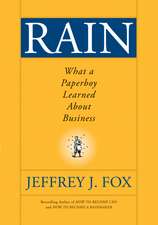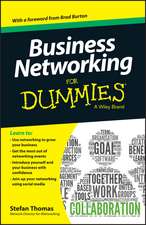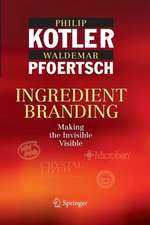Construction Inspection Handbook: Total Quality Management
Autor James J. O'Brienen Limba Engleză Hardback – 31 aug 1997
| Toate formatele și edițiile | Preț | Express |
|---|---|---|
| Paperback (2) | 960.93 lei 6-8 săpt. | |
| Springer Us – 5 sep 2012 | 960.93 lei 6-8 săpt. | |
| Springer Us – 9 oct 2012 | 1670.27 lei 6-8 săpt. | |
| Hardback (1) | 1675.49 lei 6-8 săpt. | |
| Springer Us – 31 aug 1997 | 1675.49 lei 6-8 săpt. |
Preț: 1675.49 lei
Preț vechi: 2043.28 lei
-18% Nou
Puncte Express: 2513
Preț estimativ în valută:
320.64€ • 332.85$ • 267.36£
320.64€ • 332.85$ • 267.36£
Carte tipărită la comandă
Livrare economică 22 martie-05 aprilie
Preluare comenzi: 021 569.72.76
Specificații
ISBN-13: 9780412112317
ISBN-10: 0412112310
Pagini: 678
Ilustrații: IX, 663 p.
Dimensiuni: 155 x 235 x 42 mm
Greutate: 1.08 kg
Ediția:4th ed. 1997
Editura: Springer Us
Colecția Springer
Locul publicării:New York, NY, United States
ISBN-10: 0412112310
Pagini: 678
Ilustrații: IX, 663 p.
Dimensiuni: 155 x 235 x 42 mm
Greutate: 1.08 kg
Ediția:4th ed. 1997
Editura: Springer Us
Colecția Springer
Locul publicării:New York, NY, United States
Public țintă
ResearchCuprins
A. Quality Assurance.- A-1 The Need for QA/QC.- A-2 Quality Assurance Plans.- A-3 Codes and Standards.- A-4 Contract Documents.- A-5 Legal Aspects.- A-6 Quality Trend Setters.- A-7 ISO 9770.- A-8 Partnering.- A-9 Total Quality Management.- B. Quality Control.- B-1 Quality Control Inspection Team.- B-2 QC Field Testing.- B-3 Field Administration.- C. Project Characteristics.- 2 Site Construction.- 3 Concrete.- 4 Masonry.- 5 Metals.- 6 Wood and Plastics.- 7 Thermal and Moisture Protection.- 8 Doors and Windows.- 9 Finishes.- 10 Specialties.- 11 Equipment.- 12 Furnishings.- 13 Special Construction.- 14 Conveying Systems.- 15 Mechanical.- 16 Electrical.- Appendixes.- Appendix A Astm Standards.- Appendix B Organizations and Associations.- Appendix C Quality Assurance Plan.
Descriere
Descriere de la o altă ediție sau format:
The inspection team must become familiar with the plans and the specifica tions; they form the basis upon which the QC inspection is made. The in spector must realize that errors and omissions will be discovered, and will have to be duly reported to management. Wherever an error or omission is substantial, it is appropriate to review it with the designer first to ensure that the error noted is valid. The QC inspection team is on the job to be objective, and to enforce the contract as written. When the contract does not suffice to cover the work conditions, then the Inspector should request the opportunity to prepare an appropriate clarification or change order to the contract. The question of whether a change order is to result in a credit to the owner or to the contractor is a matter of interpretation of the plans and specifications. The Inspector should exercise great care to avoid casual commitment or agreement with change items, and should first research a change or requirement in the plans and specifications to determine that it is not included in the contractual scope-either partially or completely. Next, the inspector should collaborate with the management team, receiving their agreement before making any commitments or carrying on any conclusive discussions with the contractor. From that point on, standard change order procedures, approvals, and doc umentation should be followed.
The inspection team must become familiar with the plans and the specifica tions; they form the basis upon which the QC inspection is made. The in spector must realize that errors and omissions will be discovered, and will have to be duly reported to management. Wherever an error or omission is substantial, it is appropriate to review it with the designer first to ensure that the error noted is valid. The QC inspection team is on the job to be objective, and to enforce the contract as written. When the contract does not suffice to cover the work conditions, then the Inspector should request the opportunity to prepare an appropriate clarification or change order to the contract. The question of whether a change order is to result in a credit to the owner or to the contractor is a matter of interpretation of the plans and specifications. The Inspector should exercise great care to avoid casual commitment or agreement with change items, and should first research a change or requirement in the plans and specifications to determine that it is not included in the contractual scope-either partially or completely. Next, the inspector should collaborate with the management team, receiving their agreement before making any commitments or carrying on any conclusive discussions with the contractor. From that point on, standard change order procedures, approvals, and doc umentation should be followed.













